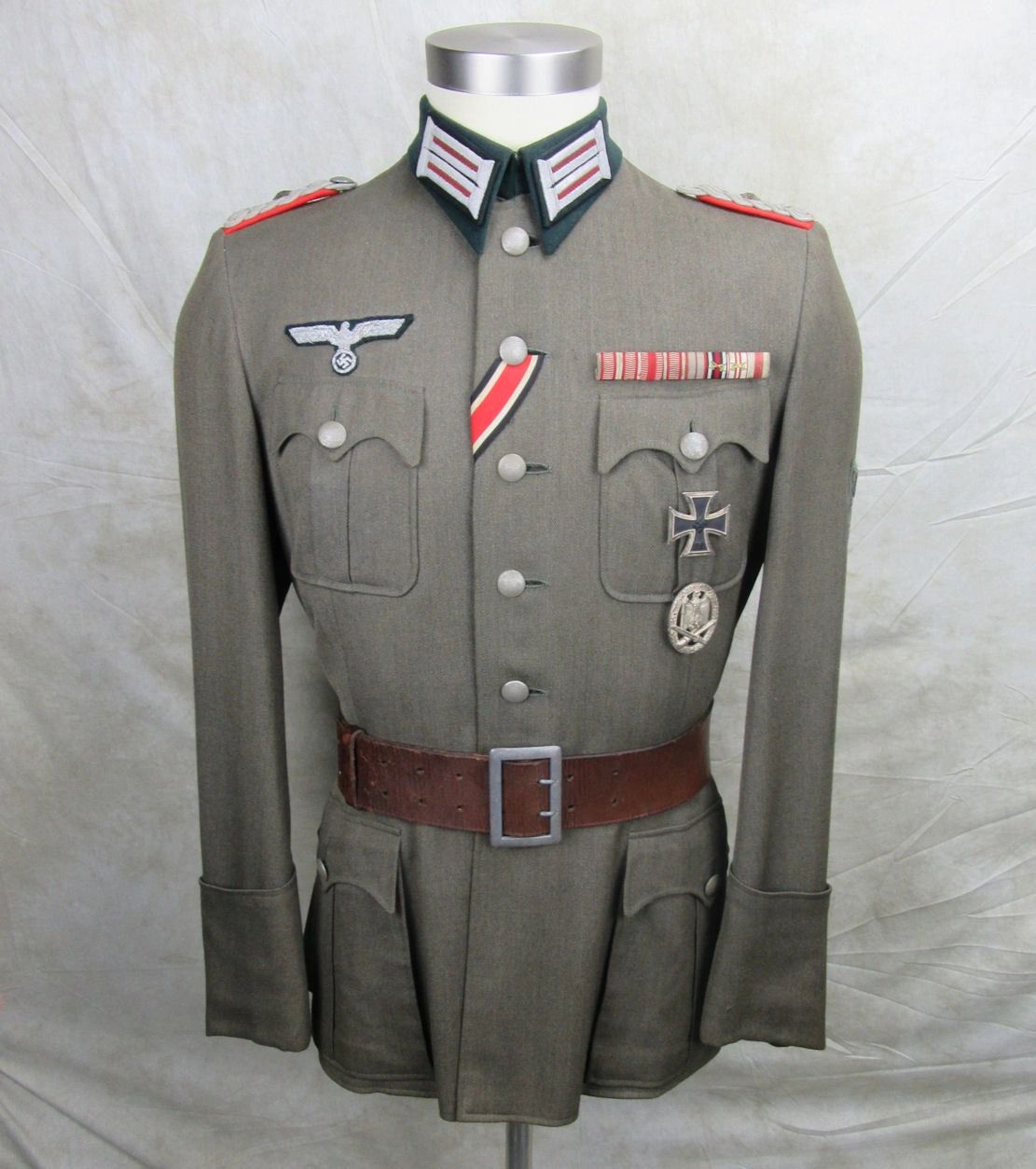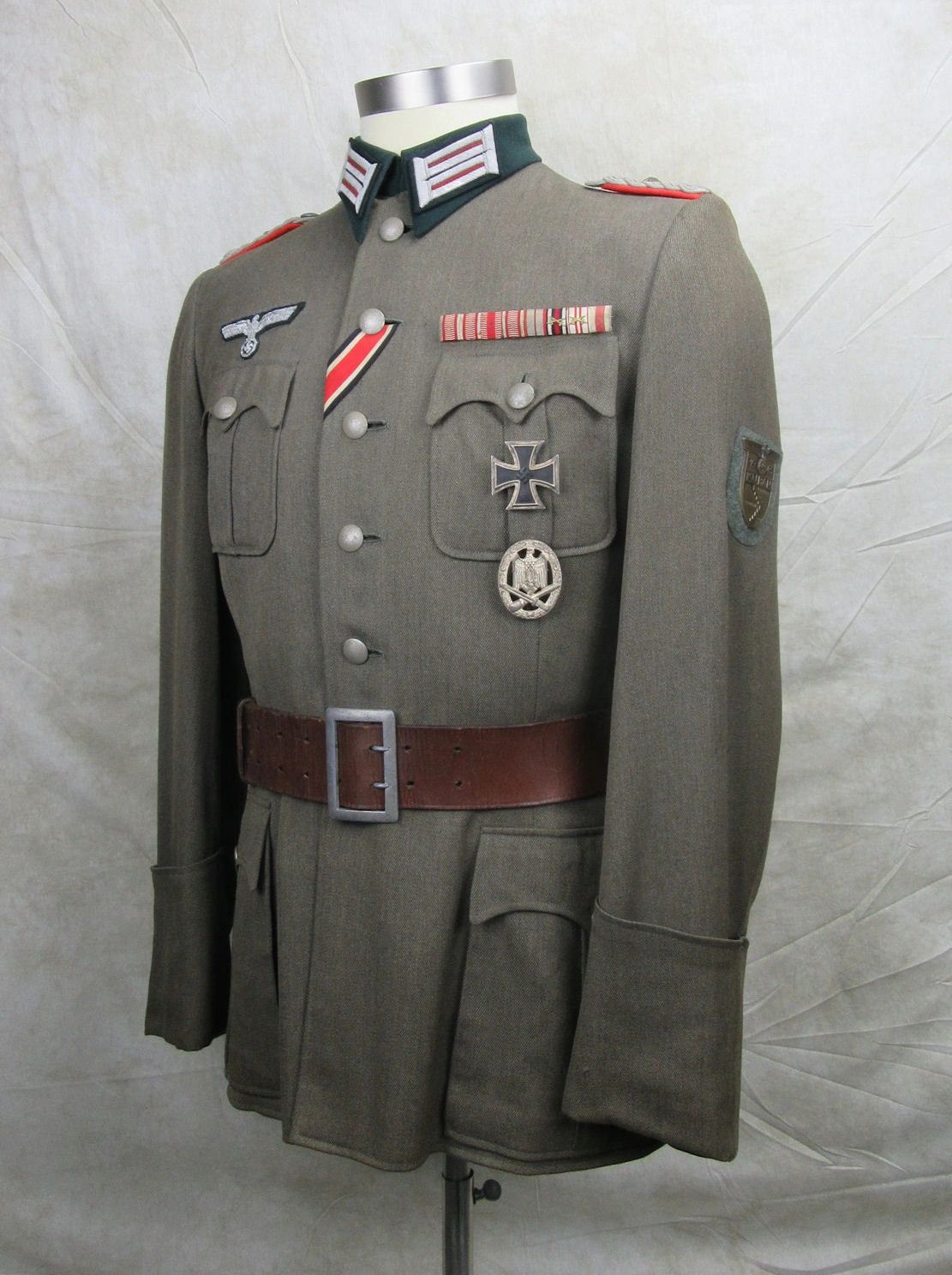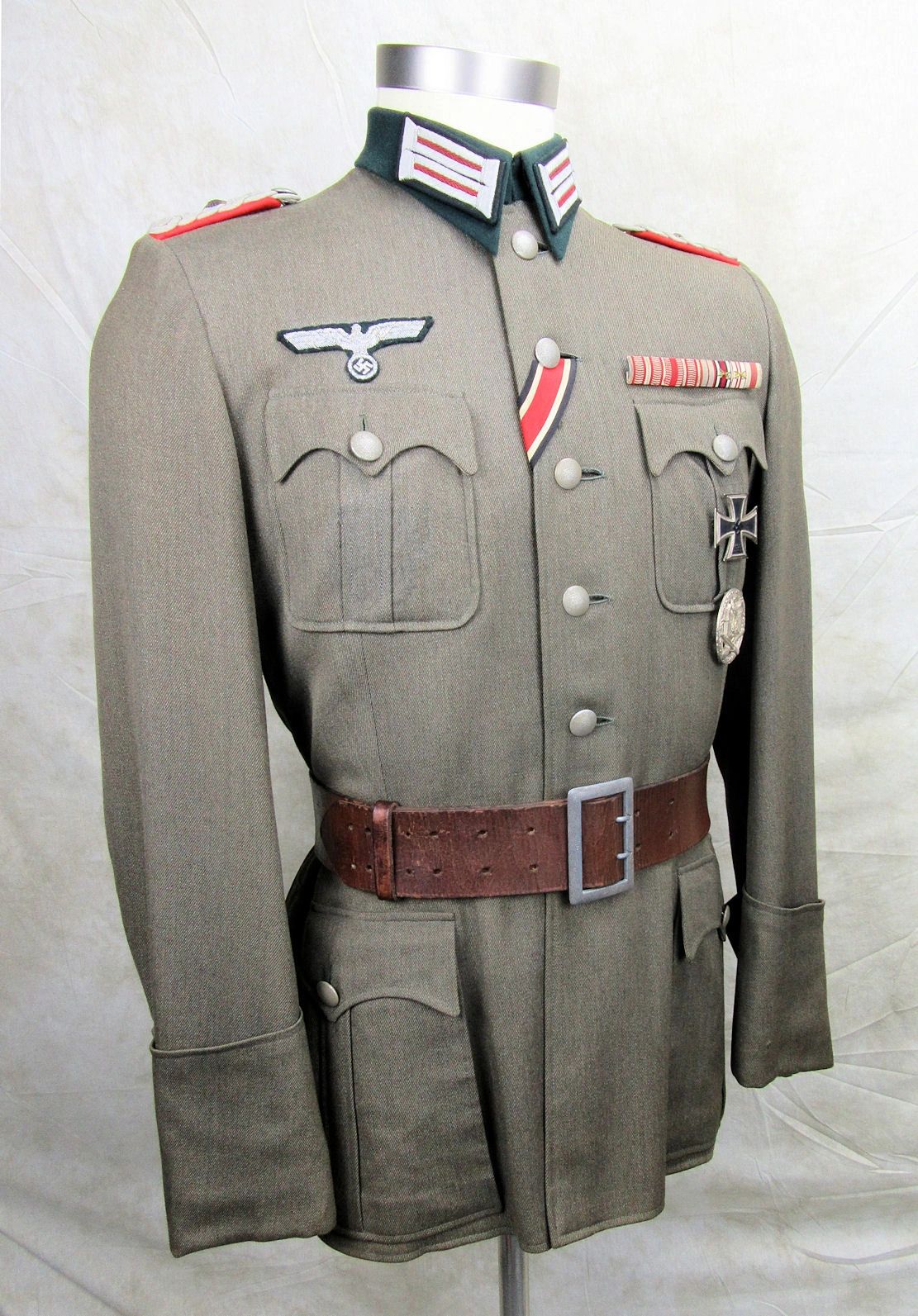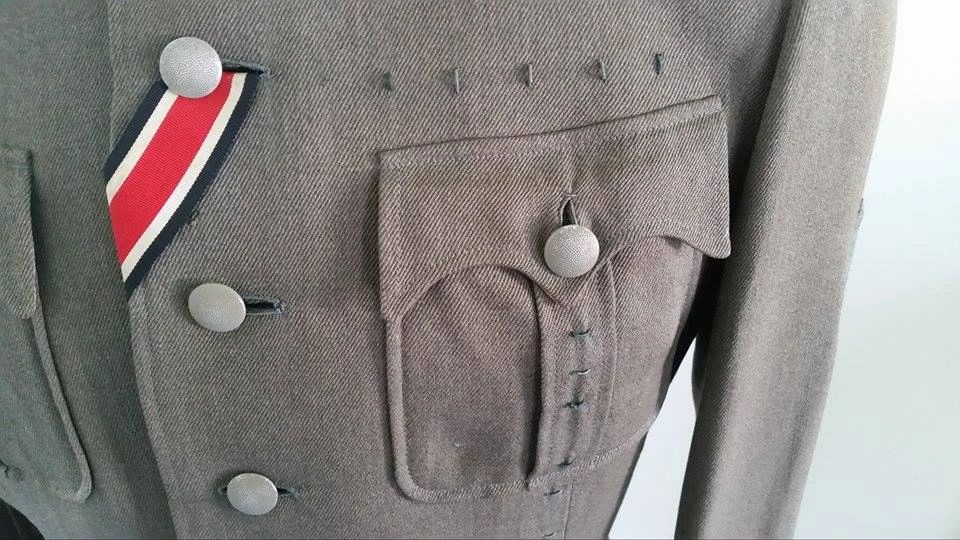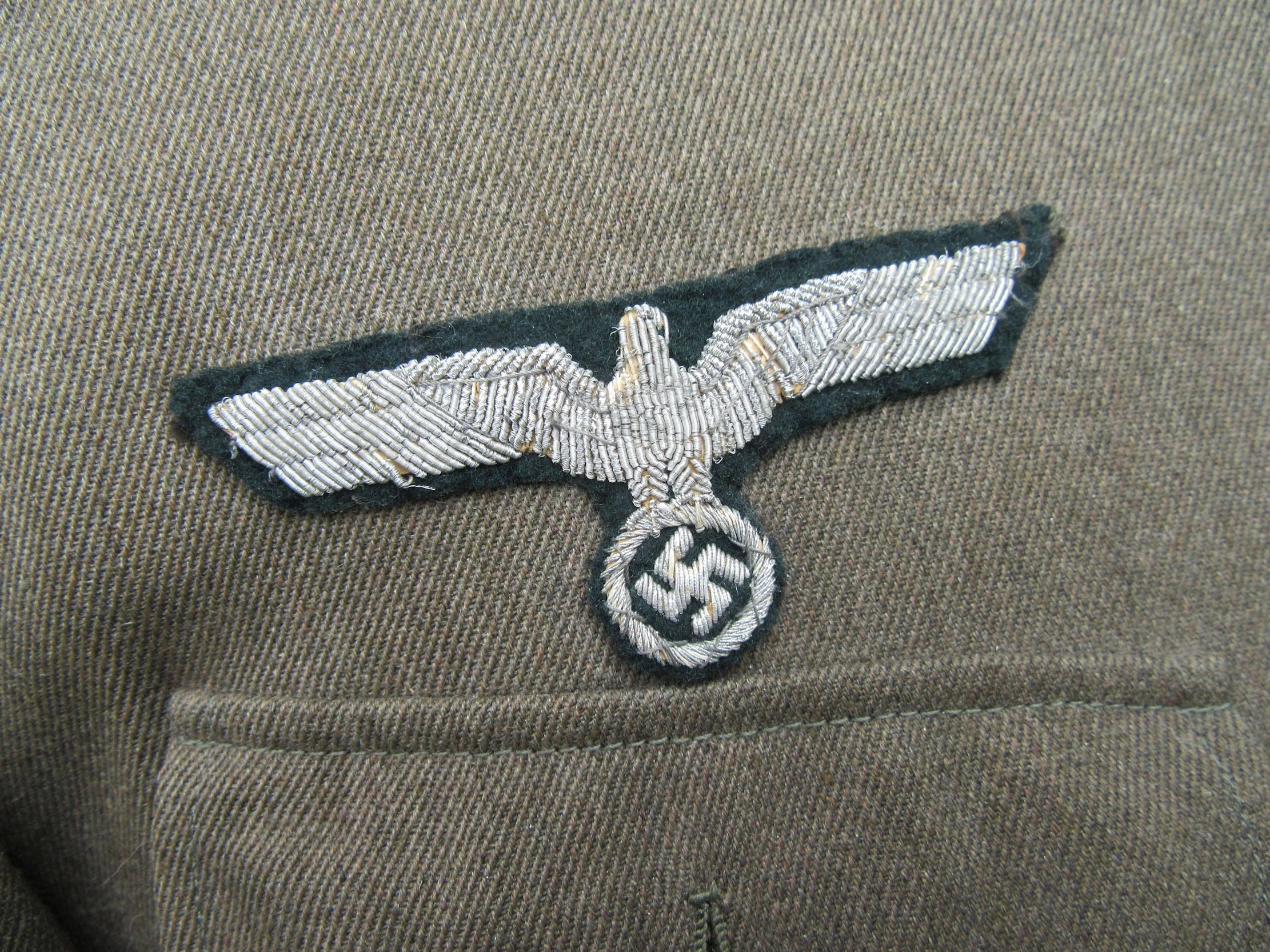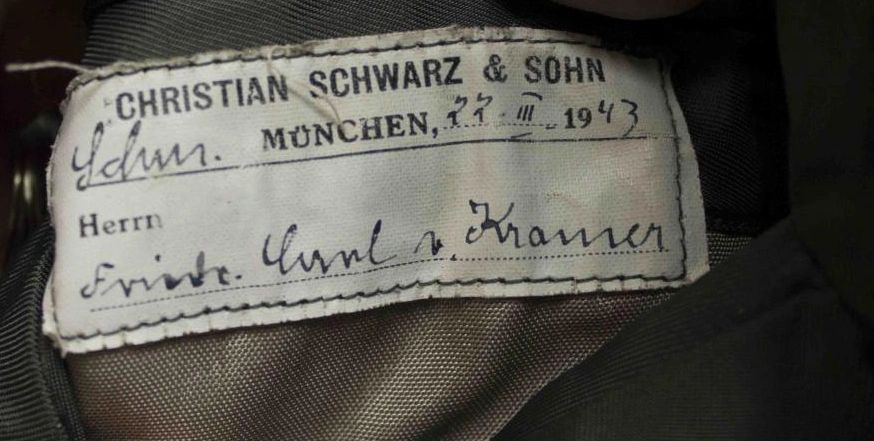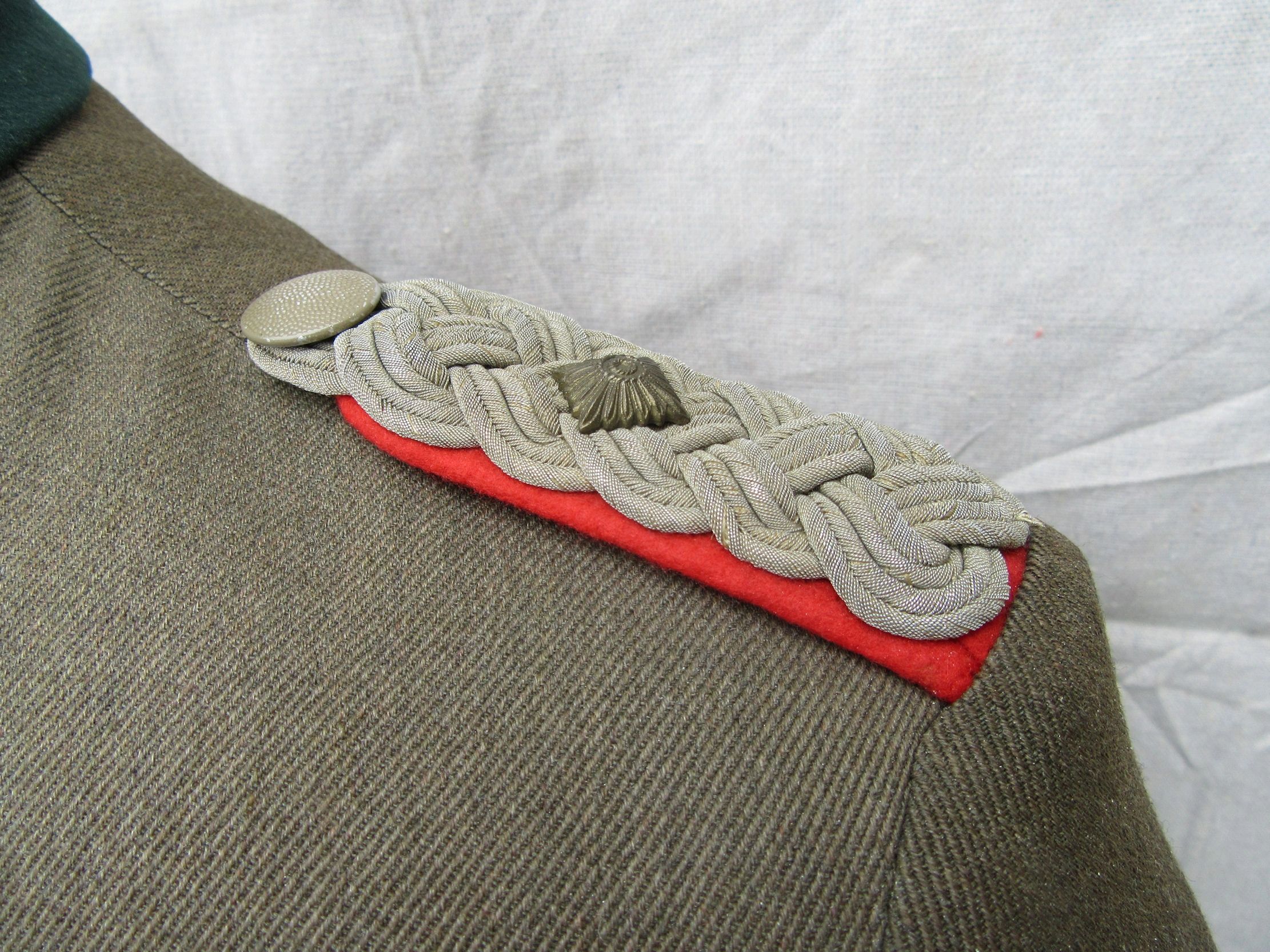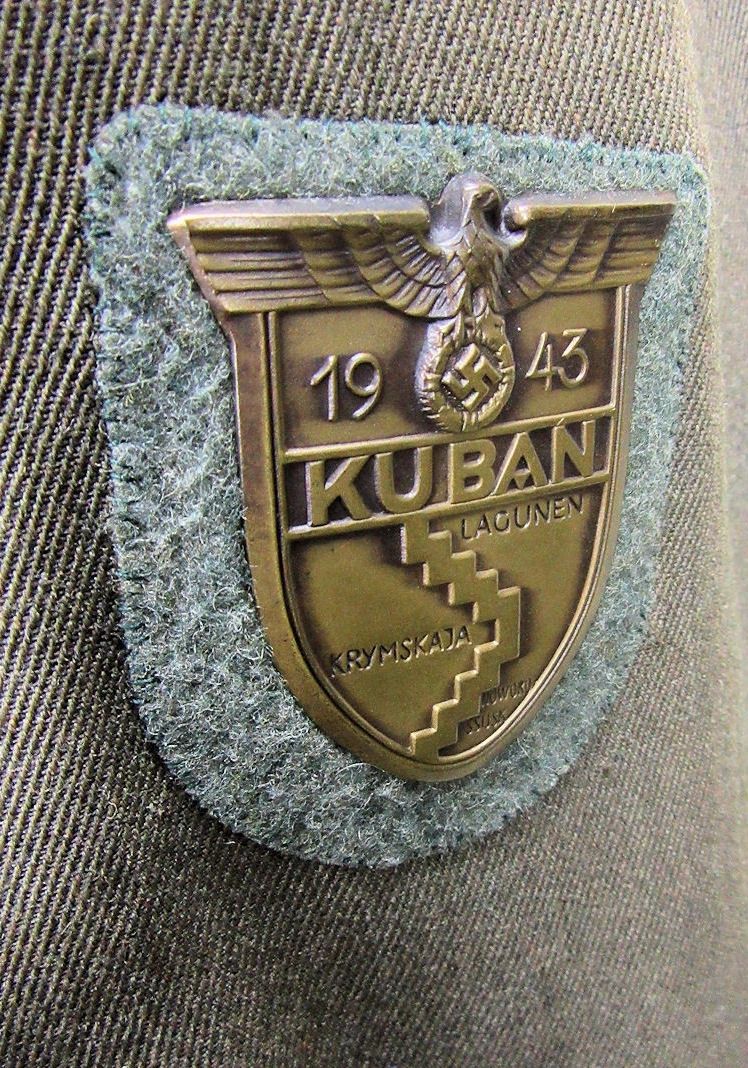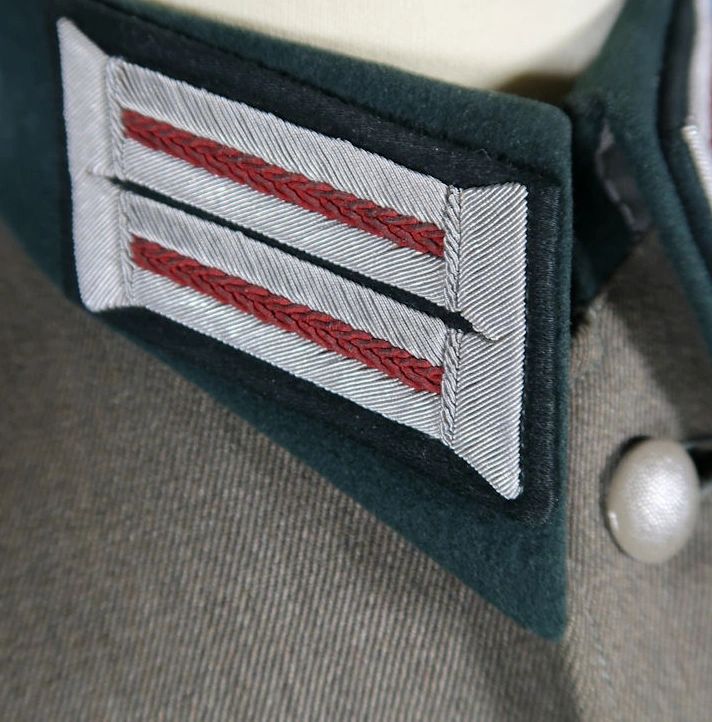Description
Here is your chance to pick up a nice example of an artillery officer’s tunic. Tailored in Austrian fabric. A Kuban campaign as per the shield worn on the sleeve which was awarded to those who fought within the Kuban bridgehead in the Soviet Union from February 1943 until it was abandoned in October 1943. Multiple other award loops present as well. Named to Friedrich Carl von Kramer, born in Neustadt on 09.04.1885 and died in München on 02.12.1958. Awards and belt in photos are for display only and are NOT included apart from the Kuban shield which is affixed to the sleeve. The Heer was the land forces component of the Wehrmacht, the regular German Armed Forces, from 1935 until it ceased to exist in 1945 and then formally dissolved in August 1946. During World War II, a total of about 13.6 million soldiers served in the German Army. Germany’s army personnel were made up of volunteers and conscripts. Only 17 months after Adolf Hitler announced publicly the German rearmament program, the Army reached its projected goal of 36 divisions. During the autumn of 1937, two more corps were formed. In 1938 four additional corps were formed with the inclusion of the five divisions of the Austrian Army after the Anschluss in March. During the period of its expansion under Hitler, the German Army continued to develop concepts pioneered during World War I, combining ground (Army) and air (Luftwaffe) assets into combined arms forces. The German military managed quick victories in the two initial years of World War II, a new style of warfare described as Blitzkrieg for its speed and destructive power.Free shipping ANYWHERE IN THE WORLD & I don’t charge PayPal fees like some of the other guys!
